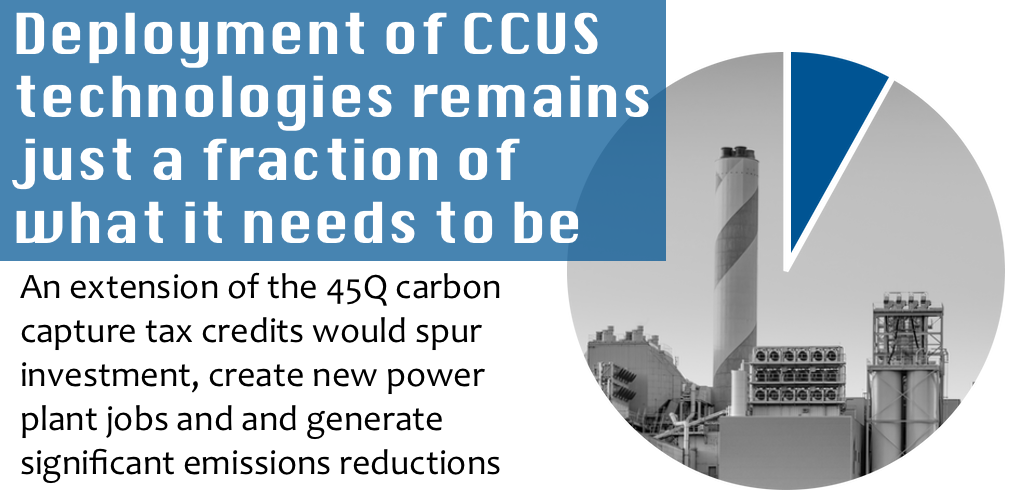
Double Down on Carbon Capture Incentives
There is obvious momentum building behind carbon capture, utilization and storage (CCUS). There’s widespread international recognition of the necessity of the technology, the president-elect has made it a centerpiece of his climate and energy approach, and it’s a rare place of bipartisan agreement in a divided Washington. And thanks to IRS guidance issued this May on 45Q carbon capture tax credits, the pipeline of U.S. CCUS projects is growing. Yet, for all the good news, investment in and deployment of CCUS technologies remains just a fraction of what it needs to be.
According to a new report from the Global Carbon Capture and Storage Institute, at least a “100-fold” increase in the amount of CO2 trapped and stored is needed by 2050 to hit global emissions-reduction targets. In other words, there’s a tremendous amount of work to be done.
There’s no shortage of promising ideas to encourage investment in the U.S. projects – everything from supporting the development of CO2-carrying pipelines to expanding the program that oversees the wells that will store captured emissions – but perhaps the most obvious and widely-supported idea is to expand the time window to claim 45Q carbon capture tax credits.
Currently, projects aiming to use the credits must start project construction by the end of 2023. Since it took two years just to get IRS guidance on how to use the credits, that’s an unfortunately tight window for companies to make major investment decisions. To achieve the intended potential of the 45Q tax credit, and to see projects like Consol Energy’s proposed advanced carbon capture-equipped coal plant come to fruition, Congress should extend the window to claim it. Two commonsense bipartisan legislative proposals already exist to extend it either permanently or by five years.
The benefits of extending the timeframe to claim the credit are clear. In fact, recent analysis from the Rhodium Group, a leading energy research group, found that both a permanent extension and a 5-year extension would be highly effective at generating significant emissions reductions while spurring investment in CCUS in both the electricity-generation and industrial sectors. Their analysis also found that an extension could create nearly 160,000 jobs at newly constructed plants and existing facilities. In addition, it could spur the deployment of more than 50 GW of new power plants outfitted with carbon capture, an amount equal to the capacity of half the nation’s existing nuclear power fleet which meets about 20 percent of the nation’s power demand.
An extension of the timeframe to claim the credits simply makes sense. It will prove effective in doing exactly what the tax credit set out to do – spur investment in essential projects and create the foundation for a thriving, world-leading industry. And to be clear, U.S. leadership on CCUS is essential.
Fossil fuels meet 80 percent of the world’s energy needs. Coal is the world’s leading fuel for electricity generation and used to produce 70 percent of the world’s steel. These fuels will remain the foundation for the world’s energy systems for the foreseeable future. Pretending otherwise – as too many U.S. climate hawks do – is counterproductive thinking bound to produce ineffective solutions.
A globally replicable and effective approach to meeting soaring energy demand while reducing emissions leans on innovation for the technologies and fuels the world uses and will continue to use. Leading on CCUS is exactly the energy and emissions leadership the world needs from the United States and extending 45Q is just the place to start.
- On December 3, 2020
